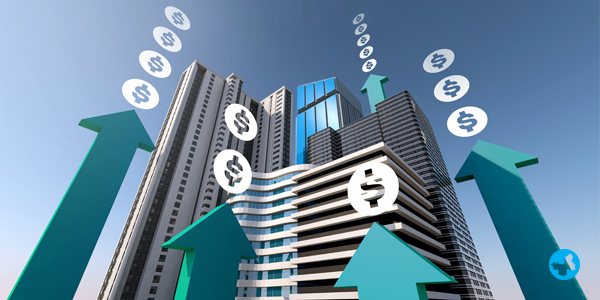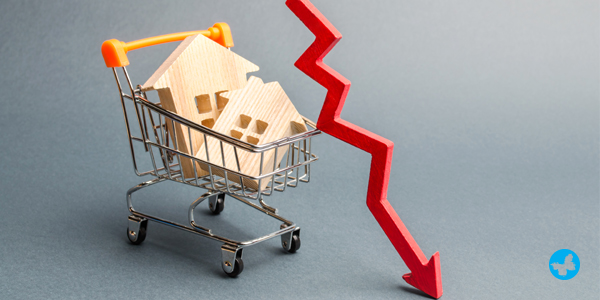If you were to draw a graph of the ups and downs of the real estate market, it would turn out like the polygraph test of an 80s stockbroker. Whether you’re a realtor, an agency, or a homeowner simply looking to increase your sales chance, you should realize that decline is also a part of this market. It can be devastating like the 2008 housing bubble, or it could be as simple as a drop in value in certain neighbourhoods.
Nevertheless, if you are going to successfully survive these turbulences, you need to constantly be on the lookout for any changes in the market. A sharp realtor or a smart homeowner could easily foresee any dips in the market. All it takes is a little intuition and of course, knowing what exactly to look out for. Here are ten telltale signs of an upcoming decline in the real estate market.
10 Signs of an Upcoming Decline in the Real Estate Market
An Increase in Vacancy Rates
Seasonal vacant lots or houses under repair or renovation excluded, a rise in vacancy rate in an area is one of the clearer signs of a drop in the real estate market. Watch out for any signs of sudden changes in vacancy rates in your area in listed houses or vacant houses that were listed but pulled off. Perfectly fine houses sitting idle is usually a sign of buyer decline in housing markets.
Higher Costs and Prices

Although any homeowner would be glad to know that their property has increased value, realtors and owners alike should beware that sometimes a raise in housing prices and mortgages with the population income remaining the same could be a sign of a stale market reaching the point of decline. A desperate, declining market needs higher prices to get its gear going.
Fewer First-Time Buyers
One of the subtler signs that could hint towards a decline in real estate markets is a tangible dip in first-time buyers. First-time buyers are very careful and considerate. Past experiences prove that whenever first-time house buyers feel insecure about the market and the value of their investment, usually it’s followed by a sharp economic decline which leads to a declining housing market.
Population Decline
It’s very simple, houses are where the people are. Population contraction is the number one enemy of real estate value. Long-term population declines mean fewer buyers, and more vacancies resulting in stagnation and decline of the housing market. Although the population declines due to many factors, it’s always a good idea to have a grasp of where people tend to move and stay.
A Failing Job Market
Some cities and areas have a diverse job portfolio, almost guaranteeing a certain level of economic stability, which means more property investment and a better, thriving real estate market. Others however depend on a few, or in some cases a single not-so-reliable job center. If anything happens to that job center, like what happened to the automotive industry of Detroit or military towns in the 1990s, the housing market goes away along with those jobs. Investors and realtors should always have an eye on the job market.
Interest Rates
Every single fluctuation in the housing and real estate market has a common factor: Interest rates. A low interest rate is a fast way to create a boom in any real estate atmosphere, it leads to an increased cash flow and buyers line up to buy houses. Suddenly, the developers realize they need even more cash and start raising the interest rate, which historically has led to some devastating declines. Beware of price rises that are only and only based on low interest rates.
Raising Property Taxes

A disproportion between public services and taxes may be another sign of a declining real estate market. In some cases, when a community starts losing businesses and the government’s tax base is declining, they raise the property taxes so commercial outlets won’t have to cut their costs. Raising property taxes may be a sign of a failing economy (which leads to a housing market decline) or even a stagnated real estate market.
Environmental Factors
Routine lead and asbestos inspections aside, there are many other environmental factors that directly or indirectly drive your real estate market, whether it’s up or down. Any environmental issue, even small, could lead to future hazards like soil and water contamination, air pollution, or industrial pollution. These will in time take their toll on the property value.
Tougher Real Estate Contracts
A shift in contract paradigms may indicate that there’s something wrong with your real estate markets. Tougher, contingency-filled contracts usually indicate that it’s a tough market for buyers and sellers to have the upper hand, which could mean that the market does not have as many buyers as before.
Raising Mortgage Rates
With high inflation, governments quickly raise interest rates to back the economy. When the government makes it harder for banks to borrow money, the banks will in return start making lending money to their customers more and more difficult. That means raising mortgage rates and a decline in mortgage applicants. That means a lot of prospective house buyers will have to back out.
Conclusion
The real estate and housing market has been constantly in flux, it’s in its nature. But like a good sailor, knowing your way around the waves means guiding your way through all the ups and downs to safety. Being aware of these factors will give you an edge when looking at the grander picture of your market, letting you see changes before they hit hard.
We hope you find this content from AgentPrint useful. Please share your views with us.
